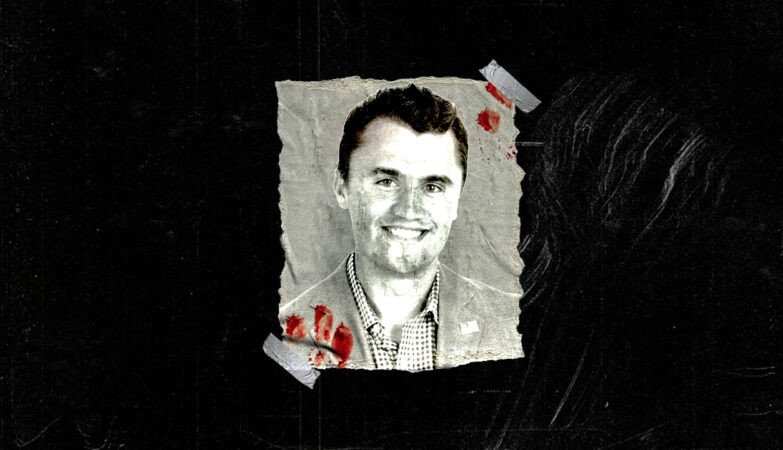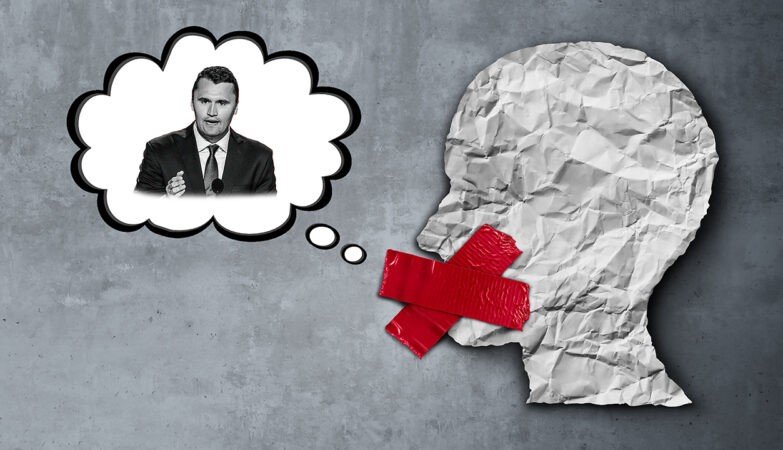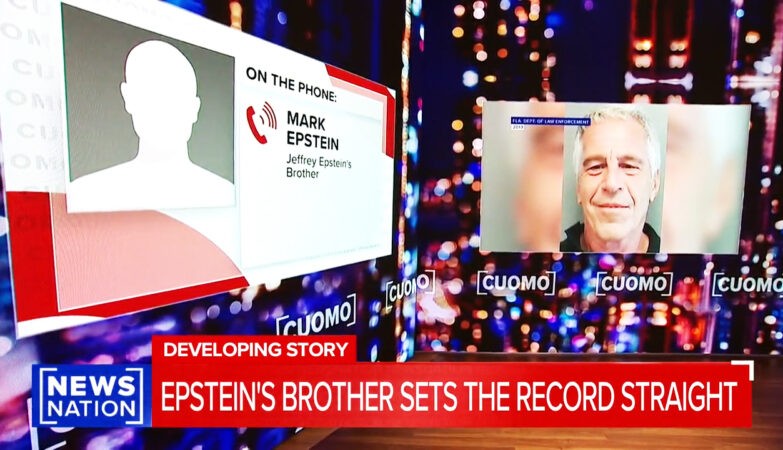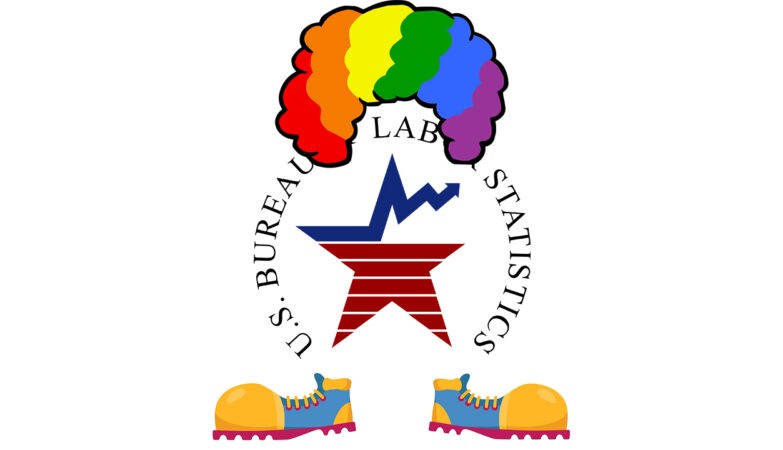Sen. Scott Jensen, R-Minn., a physician in Minnesota, was interviewed by “The Ingraham Angle” host Laura Ingraham on April 8, 2020 on Fox News and claimed hospitals get paid more if Medicare patients are listed as having COVID-19 and get three times as much money if they need a ventilator.
The claim was published April 9 by The Spectator, a conservative publication. WorldNetDaily shared it April 10 and, according to Snopes, a related meme was shared on social media in mid-April.
Jensen took it to his own Facebook page April 15, saying, in part:
“How can anyone not believe that increasing the number of COVID-19 deaths may create an avenue for states to receive a larger portion of federal dollars. Already some states are complaining that they are not getting enough of the CARES Act dollars because they are having significantly more proportional COVID-19 deaths.”

On April 19, he doubled down on his assertion via video on his Facebook page.
Jensen said, “Hospital administrators might well want to see COVID-19 attached to a discharge summary or a death certificate. Why? Because if it’s a straightforward, garden-variety pneumonia that a person is admitted to the hospital for – if they’re Medicare – typically, the diagnosis-related group lump sum payment would be $5,000. But if it’s COVID-19 pneumonia, then it’s $13,000, and if that COVID-19 pneumonia patient ends up on a ventilator, it goes up to $39,000.”
Jensen clarified in the video that he doesn’t think physicians are “gaming the system” so much as other “players,” such as hospital administrators, who he said may pressure physicians to cite all diagnoses, including “probable” COVID-19, on discharge papers or death certificates to get the higher Medicare allocation allowed under the Coronavirus Aid, Relief and Economic Security Act. Past practice, Jensen said, did not include probabilities.
He noted that some states, including his home state of Minnesota, as well as California, list only laboratory-confirmed COVID-19 diagnoses. Others, specifically New York, list all presumed cases, which is allowed under guidelines from the Centers for Disease Control and Prevention as of mid-April and which will result in a larger payout.
Jensen said he thinks the overall number of COVID-19 cases have been undercounted based on limitations in the number of tests available.
Provision In the Relief Act
The coronavirus relief legislation created a 20% premium, or add-on, for COVID-19 Medicare patients.
There have been no public reports that hospitals are exaggerating COVID-19 numbers to receive higher Medicare payments.
Jensen didn’t explicitly make that claim. He simply suggested there is an “avenue” to do so now that “plausible” COVID-19, not just laboratory-confirmed, cases can be greenlighted for Medicare payment and eligible for the 20% add-on allowed under the relief act.
The initial $30 billion – out of $100 billion – in the grants dedicated to health care providers to address the pandemic was disbursed according to 2019 Medicare reimbursements.
The second wave will focus on providers in areas more heavily affected by the outbreak, according to Kaiser Health News, giving rise to Jensen’s concern that hospitals could exploit the CDC’s guidelines allowing presumed cases.
Jensen did not return an email request from USA TODAY for comment about his claim.
USA TODAY reached out to Marty Makary, a surgeon and professor of health policy and management at Johns Hopkins Bloomberg School of Public Health, about the claim. Makary said in an email April 21 that “what Scott Jensen said sounds right to me.”
Makary did not elaborate, answer additional questions or respond to a request for an interview.
USA TODAY reached out to the American Hospital Association and Federation of American Hospitals on April 22, but as of publication had not received a response.
How Does Medicare Pay?
Snopes investigated the claim, finding it’s plausible Medicare pays in the range Jensen mentions but doesn’t have a “one-size-fits-all” payment to hospitals for COVID-19 patients.
As explained by nurse Elizabeth Davis in her piece for verywellhealth.com, each hospital has a base payment rate assigned by Medicare. It takes into account nationwide and regional trends, including labor costs and varying health care resources in each market.
Then, each diagnosis-related group, which classifies various diagnoses into groups and subgroups, is assigned a weight based on the average amount of resources it takes to care for a patient. Those figures are multiplied to determine the payment from Medicare. A hospital in one city and state may be paid more or less for treating a patient than a hospital in another.
PolitiFact reporter Tom Kertscher wrote, “The dollar amounts Jensen cited are roughly what we found in an analysis published April 7 by the Kaiser Family Foundation, a leading source of health information.”
Ask FactCheck weighed in April 21: “The figures cited by Jensen generally square with estimated Medicare payments for COVID-19 hospitalizations, based on average Medicare payments for patients with similar diagnoses.”
Ask FactCheck reporter Angelo Fichera, who interviewed Jensen, noted, “Jensen said he did not think that hospitals were intentionally misclassifying cases for financial reasons. But that’s how his comments have been widely interpreted and paraded on social media.”
Ask FactCheck’s conclusion: “Recent legislation pays hospitals higher Medicare rates for COVID-19 patients and treatment, but there is no evidence of fraudulent reporting.”
Julie Aultman, a member of the editorial board of the American Medical Association’s Journal of Ethics, told PolitiFact it is “very unlikely that physicians or hospitals will falsify data or be motivated by money to do so.”
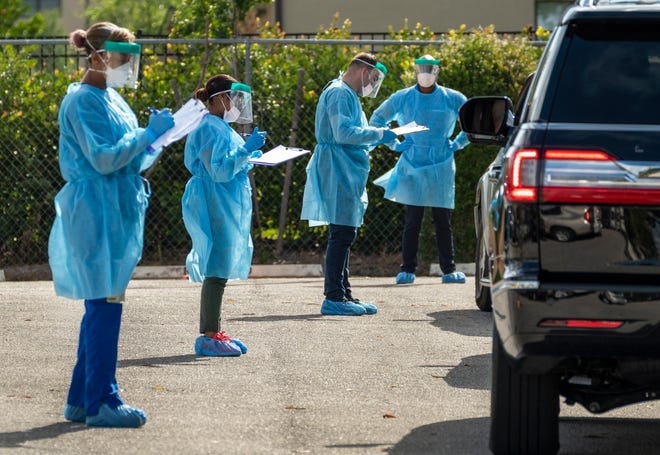
Hospitals and doctors did and still do get paid more for Medicare patients diagnosed with COVID-19 or if it’s considered presumed they have COVID-19 absent a laboratory-confirmed test, and three times more if the patients are placed on a ventilator to cover the cost of care and loss of business resulting from a shift in focus to treat COVID-19 cases.
This higher allocation of funds has been made possible under the Coronavirus Aid, Relief and Economic Security Act through a Medicare 20% add-on to its regular payment for COVID-19 patients, as verified by USA TODAY through the American Hospital Association Special Bulletin on the topic.
Ventilators Being Used to Kill People
For weeks, the media and the left yelped and caterwauled for ventilators. Needless to say, the shortage never happened. Worse, ventilators can do more harm than good. But the media continues to promote ventilators while attacking and inciting fear about hydroxychloroquine, zithromax and zinc.
From doctors on scene in Florida: “ER docs are finding that ‘low sat’ “happy hypoxics” comfortably walking around did well with high flow nasal cannulas, but because there’s a protocol to intubate a low sat, they were tubing high numbers and sending them into cytokine storm, and this is unique to Covid19 in that is not the thing to do unless the patient becomes in true respiratory distress. So it’s cannulas needed more than vents and the “experts” have to catch up.
And when patients go to ICU they try to talk them into hospice right away.”
It’s a culture of death.
Both the intense pressure and the high levels of oxygen forced into patient’s lungs appear to be responsible for the damage caused by mechanical ventilators, which were first proven harmful in 1827 by French surgeon Leroy d’Etoille. Yet the public health disaster known as mechanical ventilation continues to this day.
In an article at endalldisease.com, evidence is presented suggesting mechanical ventilators are harming patients and doing precisely the opposite of their intended use – reducing cellular oxygenation rather than increasing it.
Carbogen, a mixture of 5% carbon dioxide in either air or oxygen, has been proven to cure pneumonia in 12 to 24 hours and was routinely used by firefighters, hospitals and rescue crews on emergency patients in the United States in the 1940’s.
This is a call to hospitals worldwide for the immediate replacement of mechanical ventilators with HH-Inhalators, devices that produce and administer carbogen gas to patients, which will heal instead of harm. Be sure to pass this article onto any doctors or nurses in your life so they can learn about the virtues of carbogen and why mechanical ventilation is a public health disaster.
COVID-19 Controversy Surrounding Mechanical Ventilators
In the early days of the COVID-19 pandemic, a dispute broke out among critical care and emergency physicians: could the mechanical ventilators routinely used on COVID-19 patients (and not the virus itself) be the cause of ARDS (Acute Respiratory Distress Syndrome)?
Much of the debate was spurred by the impassioned pleas of the New York-based emergency physician Cameron-Kyle Siddell, who noticed from direct experience treating patients the harm being caused by mechanical ventilation.(1)
“This is the disease—Advanced Respiratory Distress Syndrome (ARDS)—that every hospital is preparing to treat. And this is the disease for which 100,000 Americans might be put on a ventilator. And yet, everything I have seen in the last 9 days [has] led me to believe that COVID-19 is not this disease, and that we are operating under a medical paradigm that is untrue. I don’t know the final answer of this disease, but I’m quite sure that a ventilator is not it.”
– Dr Cameron-Kyle Siddell
“I’ve talked to doctors all around the country and it is becoming increasingly clear that the pressure we’re providing may be hurting their lungs, that it is highly likely that the high pressures we’re using are damaging the lungs of the patients we are putting the breathing tubes in,” continued Siddell.
Reports from Wuhan, Seattle and cities in Italy now suggest that placing patients on ventilators may not significantly improve their chances of recovery or survival at all.
“Contrary to the impression that if extremely ill patients with COVID-19 are treated with ventilators they will live and if they are not, they will die, the reality is far different,” Gillick said.
For decades it has been known that the use of mechanical ventilators themselves can cause pneumonia in patients. One team of scientists wrote that patients undergoing mechanical ventilation “are at significant risk of developing a secondary, ventilator-associated pneumonia (VAP).”
An article from Live Science reported the following:
Patients with low blood-oxygen levels but few signs of distress or organ damage may not benefit from ventilation, according to researchers from Italy and Germany who submitted a letter published March 30 in the American Journal of Respiratory and Critical Care Medicine. In the letter, they described patients with these traits in Italy and Germany, noting that their lungs appeared relatively healthy as compared with COVID-19 patients with acute respiratory distress, a condition where the air sacs in the lungs fill with fluid.
Even if patients do develop acute respiratory distress, they may not benefit from ventilation either. The thick fluid clogging up the lungs “limits oxygen transfer from the lungs to the blood, even when a machine pumps in oxygen,” said Dr. Muriel Gillick, a geriatric and palliative care physician at Harvard Medical School. In this case, placing a patient on a ventilator could damage their lungs by introducing too much pressure into the organ, she said.
Modern doctors are observing what had been proven almost 200 years ago: Mechanical ventilation is a dangerous and damaging practice. In 1827, French surgeon Leroy d’Etoille demonstrated “that elevated air pressure could cause ruptured alveoli, emphysema, and tension pneumothorax.” The elevated air pressure he describes is the same that’s routinely being used today on COVID patients with mechanical ventilators.
If mechanical ventilators are harmful, then why are they being routinely used on COVID-19 patients?
In order to answer this question, it’s essential that we understand a bit about the history of mechanical ventilators. An essay from Harvard University in 2021 details the history of ventilators and how the disease ARDS emerged as a syndrome caused by the use of ventilator technology itself.
Our story begins with the polio outbreak in Copenhagen in the early 1950s.
Ventilators & The Polio Outbreak in Copenhagen
In 1952, Polio struck the city of Copenhagen hard. The emergence of the Polio epidemic in the early 1950’s sparked the revival of a dangerous practice in medicine that had long been proven harmful: Positive-pressure ventilation. The Blegdam, Copenhagen’s only infectious diseases hospital, was quickly overrun with patients, and they needed a way to handle the tsunami of patients “desperately ill with respiratory insufficiency and impairment of deglutition, drowning in their own secretions.”
A closer look at the polio patients reveals that many had respiratory paralysis, where they basically stopped breathing. “Their bold solution was to manually ventilate patients by squeezing a rubber bag attached to a tracheostomy tube inserted through an incision just below the larynx,” reports a study published in The American Physiological Society in 2005. “The logistical problem was solved by having a roster of 200 medical students who operated in relays. At the height of the epidemic, 70 patients had to be manually ventilated around the clock. The medical students worked 6- or 8-h shifts so that three or four shifts were needed in the 24 h.” One report states that 1,500 students in all took part in this activity with a total of 165,000 hours.
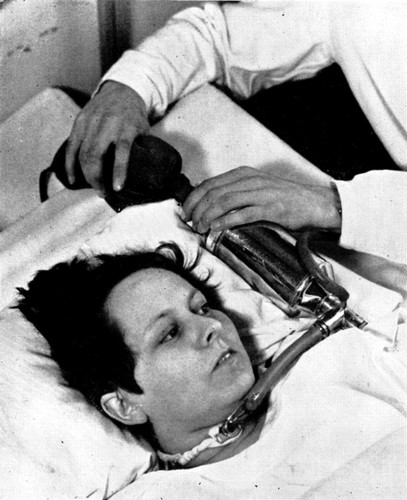
It’s important to note that no successful treatment by positive pressure ventilation given continuously over a long period had been reported by 1950. This is a great example of the dissociation that commonly occurs between scientific advancements and their application to clinical situations. Here we have a procedure that had been proven ineffective and harmful long ago, and yet positive-pressure ventilation was chosen to deal with patients during the Polio outbreak.
By Christmas of 1952, the polio epidemic began to fade, and the mortality rate had dropped from 87% to below 40%. Manual ventilation was hailed “superior to all other methods of artificial respiration in securing adequate ventilation.”To this day, many cite this incident as proof of the effectiveness of mechanical ventilators, but “this is not entirely accurate,” reported Dr. Yvan Prkachin of Harvard University in his 2021 review. According to Lassen, manual ventilation is safer and more effective than mechanical ventilation. Prkachin wrote,
Lassen himself noted in his first report on the 1952 epidemic that one of the greatest advantages of the Copenhagen experiment was the avoidance of mechanical ventilation altogether (in the form of iron lungs) in favor of manual ventilation without machines: “In our experience this new form of positive-pressure ventilation (bag ventilation) can be used continuously for months. … [I]t has in many instances been possible totally to avoid the use of mechanical respirators. This we consider a great advantage.”
Something not mentioned in Prkachin’s paper that’s also critical to understand, as far as the differences between ventilation during polio and ventilation during COVID, is that the air administered to patients in Copenhagen in 1952 contained 50% nitrogen and 50% oxygen, which is significantly less damaging than the 100% oxygen administered under pressure to COVID-19 patients using mechanical ventilators.
The manual ventilation of patients in Copenhagen during the polio outbreak was safer and less harmful than what is being done today on COVID patients, but I maintain that even the manual ventilation of 50% oxygen used on polio patients was doing more harm than good. A major misunderstanding of respiratory physiology in the 50’s, which still exists today, maintains falsely that carbon dioxide is a waste gas. (More about why a high level of carbon dioxide is essential for health shortly.)
Chief physician at the hospital Alexander Lassen (1900–1974) admitted that they didn’t really know what they were doing. “Although we thought we knew something about the management of bulbar and respiratory poliomyelitis it soon became clear that only very little of what we did know at the beginning of the epidemic was really worth knowing”.
Mechanical Ventilators: A Public Health Disaster
One of the common features observed in COVID-19 patients in hospital settings is a rapid oxygen desaturation in the blood. The response by the medical industry has been to administer fentanyl, (which, prior to the COVID-19 outbreak was labelled “The most dangerous illegal drug in America” then force oxygen into their lungs through the use of a mechanical ventilator. This practice suggests an alarming lack of understanding of human physiology and of history.
By forcing oxygen into the lungs of patients using a ventilator, carbon dioxide (CO2) gas is rapidly removed from the bloodstream and replaced by oxygen. This would be beneficial if carbon dioxide were actually a waste gas like it’s widely believed to be, however, what’s taught to doctors and nurses in their medical training about the physiological role of carbon dioxide in the body is dead wrong! The fact remains that without adequate carbon dioxide, the body cannot use oxygen, and the keys to understanding why are a couple important concepts called The Haldane Effect and The Bohr Effect.
The Haldane Effect, first described by John Scott Haldane in the early 20th century, shows that elevating blood oxygen levels will remove carbon dioxide from the body. And The Bohr Effect, which is a mirror image of The Haldane Effect, shows us that without sufficient carbon dioxide in the body, the cells cannot use oxygen. By forcing oxygen into the lungs of COVID-19 patients using positive pressure ventilation, oxygen use becomes further impaired, rendering the hypoxia worse.
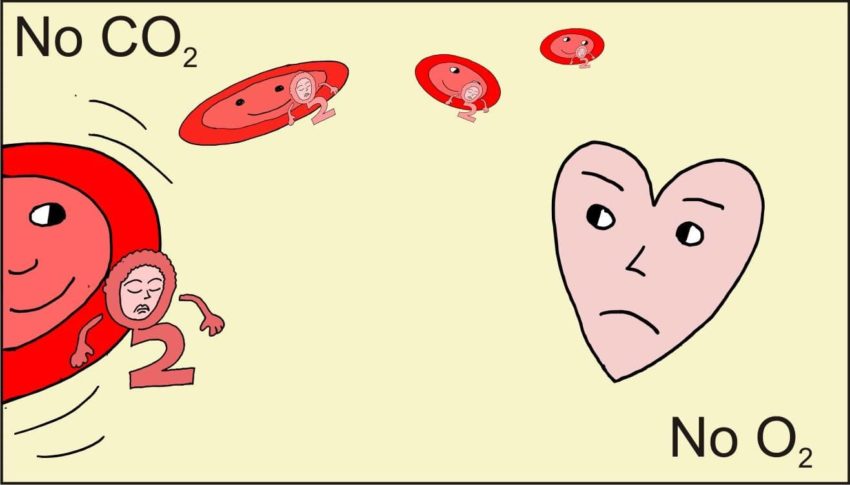
| “Do people know that our health depends on the level of carbon dioxide in the body?” – Dr Alina Vasiljeva and Dr David Nias |
Is Mechanical Ventilator-Induced Damage Being Blamed on COVID-19?
A mild case of the COVID-19 respiratory illness can include coughing, fever or shortness of breath, no different than the flu. In cases of severe COVID-19 the patient experiences pneumonia.
The symptoms of pneumonia reported in severe COVID-19 patients (ie damaged air sacs in the lungs) are identical to the damage caused by mechanical ventilators. Is this a coincidence? Or is the damage (and deaths) caused by the use of mechanical ventilators being blamed on the SARS-CoV-2 virus? Any doctors working directly with COVID patients who are reading this I’d love to hear your perspective based on your experience.
Whatever the case may be, what’s most important is finding a safe and effective replacement for mechanical ventilators.
It is an honor to introduce to you a miraculous medical intervention that was once commonly used in medicine but has now been forgotten. It’s safe, highly effective for many disorders, and is proven to cure pneumonia in 12 to 24 hours. Carbogen is the perfect remedy to use in place of mechanical ventilators in emergency medicine, especially for COVID-19.
The Return of The HH-Inhalator: Carbogen to the Rescue
Carbogen therapy is the medical administration of a mixture of around 5% carbon dioxide in either air or 95% oxygen to patients in emergency situations. Produced using a device called an H-H Inhalator, carbogen powerfully stimulates breathing and promotes vasodilation in the body. Medical use of carbogen was investigated in the mid-twentieth century for a range of health issues including depression, neuroses, psychoses, dementia, arthritis, cerebral palsy, asthma, hiccups, and whooping cough.
H-H Inhalator – Mine Safety Appliances (MFG 1949) from Visual Captive on Vimeo.
The article Carbon Dioxide by the late Yandell Henderson, discusses the routine use of carbogen by rescue crews in the 1940s generated by a device called an H-H Inhalator. Treat a patient with pneumonia using an H-H Inhalator and a rapid recovery will be induced.
“A special form of apparatus, the H-H Inhalator, for the administration of a mixture of oxygen and carbon dioxide to asphyxiated patients was, therefore, devised and has been widely introduced. This treatment has been so successful that many thousands of these inhalators are now in use: several hundred, for instance, in metropolitan New York, and a number corresponding to the population in Chicago and other cities. The rescue crews of the fire and police departments, the gas and electric companies, and now also the hospital ambulances generally have them. At first a mixture of 5% carbon dioxide in oxygen was used, but 7% has proved even more beneficial. The value of this treatment is not merely for the saving of life, but also for the prevention of such postasphyxial sequelae as pneumonia, injury to the heart, and permanent nervous impairment. In many cases of brief but intense asphyxiation the patient is completely restored within an hour; he may then voluntarily and safely go back to work.”
– Dr Yandell Henderson
Rather than administering pure oxygen to patients using mechanical ventilators and reducing cellular oxygenation by purging the valuable CO2 from their bodies, Carbogen rapidly oxygenates cells, which is exactly what patients lacking oxygen need.
Pneumonia Cured in 24 Hours Using Carbogen
One of the hallmarks of severe COVID-19 infection is pneumonia and the difficulty breathing (dyspnea) and inflammation-induced damage of the alveoli in the lungs. Severe COVID-19 is pneumonia, and a cure for pneumonia has been known for almost 100 years.
In the 1930s, Dr. Yandell Henderson reported to completely cure dogs with pneumonia in just 12 to 24 hours through the administration of carbogen. It worked on dogs and on humans.
“Many cases of pneumonia have now been treated with inhalation of carbon dioxide in oxygen; and a special tent for this treatment is being introduced by Henderson and Haggard. It is believed by those who have used it that this treatment is decidedly superior to that with oxygen alone,” wrote Dr. Henderson.
One last thing I’ll cover before wrapping up this work is the question: If carbogen is so effective, why did the world stop using it? I reached out to Dr. Ray Peat for an answer, to which he wrote:
“The reason that carbogen has hardly been used during the last 65 years is that a British government committee declared, without any evidence at all, that its use was irrational and harmful. The patients’ problem was not getting enough oxygen, and even if their blood pH measurements were right, which is questionable, a low pH from high CO2 is protective against oxygen deprivation. Peter Stewart’s contribution to respiratory physiology still hasn’t been assimilation by the medical profession.”
– Dr. Raymond Peat
Conclusion
Historic and scientific evidence show us clearly that the administration of oxygen under pressure causes damage to patients. Let us take this as a reminder that when we refuse to learn from history, we do so at our own peril. The current public health disaster of mechanical ventilating COVID-19 patients has been wrought by our own ignorance and the havoc is playing out now in emergency rooms worldwide.
A tried, tested and true medical intervention that should replace the use of positive pressure ventilation of pure oxygen is carbogen. The 5% carbon dioxide gas in 95% oxygen mixed by the HH-Inhalator was proven almost 100 years ago to rapidly cure pneumonia – the exact condition seen in severe COVID-19 patients. The evidence suggests a return to carbogen administration on COVID-19 patients and also in place of pure oxygen in all emergency situations.
This article is a call for the immediate replacement of the practice of mechanical ventilation with carbogen mixed and administered by the use of the HH-Inhalator.
Murderous Organization Behind COVID “Pandemic” Exposed by Nurse
Erin Marie Olszewski is a Nurse-turned-investigative journalist, who spent months on the frontlines of the coronavirus pandemic, on the inside in two radically different settings. Two hospitals. One private, the other public. One in Florida, the other in New York.
And not just any New York public hospital, but the “epicenter of the epicenter” itself, the infamous Elmhurst in Donald Trump’s Queens. As a result of these diametrically opposed experiences, she has the ultimate “perspective on the pandemic”. She has been where there have been the most deaths attributed to Covid-19 and where there have been the least.
Erin enlisted in the Army when she was 17. She deployed in support of Operation Iraqi Freedom in 2003. Part of her duties involved overseeing aid disbursement and improvements to hospital facilities. While in country she received the Army Commendation Medal for meritorious service, and was wounded in combat. Erin eventually retired as a sergeant, and became a civilian nurse in 2012. Erin is a medical freedom and informed consent advocate. She co-founded the Florida Freedom Alliance but no longer has any connection with the organization.
U.S. Respiratory Therapist/Nurse Exposes Hospitals/COVID
In May, 2020, this registered nurse and respiratory therapist exposed his place of employment, a local hospital for refusing to give patients proper equipment for treatment/diagnosis. This is a common crime that has been committed countless times to scam Medicare out of its funding as the payments for Coronavirus patients, especially requiring ventilators is many times higher.
Study: Most N.Y. COVID Patients On Ventilators Died
According to a WebMD article written by HealthDay Reporter Robert Preidt, the largest analysis of hospitalized U.S. COVID-19 patients to date finds that most did not survive after being placed on a mechanical ventilator.
He writes,
The study included the health records of 5,700 COVID-19 patients hospitalized between March 1 and April 4 at facilities overseen by Northwell Health, New York State’s largest health system.
Among the 2,634 patients for whom outcomes were known, the overall death rate was 21%, but it rose to 88% for those who received mechanical ventilation, the Northwell Health COVID-19 Research Consortium reported.
The new findings “provide a crucial early insight into the front-line response to the COVID-19 outbreak in New York,” Dr. Kevin Tracey, president and CEO of the Feinstein Institutes for Medical Research, said in a Northwell Health news release.
The findings also add fuel to the notion that ventilators may sometimes do more harm than good for patients battling for life with severe COVID-19.
Mechanical ventilators work by pushing air into the lungs of critically ill patients who can no longer breathe well on their own. These patients must be sedated and have a tube stuck into their throat.
Recognizing that complications from ventilator use can occur, some intensive care units (ICUs) have started to delay putting a COVID-19 patient on a ventilator until the last possible moment, when it is truly a life-or-death decision, said Dr. Udit Chaddha, an interventional pulmonologist with Mount Sinai Hospital in New York City.
“There had been a tendency earlier on in the crisis for people to put patients on ventilators early, because patients were deteriorating very quickly,” Chaddha said. “That is something that most of us have stepped away from doing.
“We let these patients tolerate a little more hypoxia [oxygen deficiency]. We give them more oxygen. We don’t intubate them until they are truly in respiratory distress,” Chaddha said. “If you do this correctly, if you put somebody on the ventilator when they need to be put on the ventilator and not prematurely, then the ventilator is the only option.”
New York City Physician Cameron Kyle-Sidell Pleads to Stop Using Ventilators
A New York City physician named Cameron Kyle-Sidell posted two videos on YouTube, pleading for health practitioners to recognize that COVID-19 is not a pneumonia-like disease at all but rather an oxygen deprivation condition, and that the use of ventilators may be doing more harm than good:
The ventilators themselves, due to the high-pressure methods they are running, may be damaging the lungs and leading to widespread harm of patients.
Dr. Cameron Kyle-Sidell describes himself as an “ER and critical care doctor” for NYC. “In these nine days I have seen things I have never seen before,” he says. Before publishing his video, we confirmed that Dr. Kyle-Sidell is an emergency medicine physician in Brooklyn and is affiliated with the Maimonides Medical Center located in Brooklyn.
In his video (see here), he goes on to warn the world that the entire approach to treating COVID-19 may be incorrect, and that the disease is something completely different from what the dogmatic medical establishment is claiming.
“In treating these patients, I have witnessed medical phenomena that just don’t make sense in the context of treating a disease that is supposed to be a viral pneumonia,” he explains.
He talks about how he opened a critical care using expecting to be treating patients with a viral pneumonia infection that would progress into Acute Respiratory Distress Syndrome (ARDS). But that the disease acted nothing like ARDS. “This is the paradigm that every hospital in the country is working under,” he warns. “And yet, everything I’ve seen in the last nine days, all the things that just don’t make sense, the patients I’m seeing in front of me, the lungs I’m trying to improve, have led me to believe that COVID-19 is not this disease, and that we are operating under a medical paradigm that is untrue.”
[Dr. Kyle-Sidell continues,] “In short, I believe we are treating the wrong disease, and I fear that this misguided treatment will lead to a tremendous amount of harm to a great number of people in a very short time… I feel compelled to give this information out.
…When we treat people with ARDS, we typically use ventilators to treat respiratory failure. But these patients’ muscles work fine. I fear that if we are using a false paradigm to treat a new disease, then the method that we program [into] the ventilator, one based on respiratory failure as opposed to oxygen failure, that this method being widely adopted … aims to increase pressure on the lungs in order to open them up, is actually doing more harm than good, and that the pressure we are providing to lungs, we may be providing to lungs that cannot take it. And that the ARDS that we are seeing, may be nothing more than lung injury caused by the ventilator.
Conservatively, almost a million people each year in America are killed by medical errors committed by ‘trained’ and ‘licensed’ physicians. And that’s just the ones they admit to.
Considering that COVID-19 is a new strain of flu, it should come as a surprise to no one that the doctors are basically using their patients as guinea pigs until they finally figure out what the disease is and how to treat it.
The best and simplest explanation of the mechanism of COVID-19 infection we’ve found can be read here.
They have also figured out why the anti-malarial drug, hydroxy-chloroquine, works extremely fast and effectively against COVID-19. It’s embarrassingly simple, which illustrates just how dishonest or willfully ignorant its detractors are:
How does chloroquine work? Same way as it does for malaria. You see, malaria is this little parasite that enters the red blood cells and starts eating hemoglobin as its food source. The reason chloroquine works for malaria is the same reason it works for COVID-19 — while not fully understood, it is suspected to bind to DNA and interfere with the ability to work magic on hemoglobin.
The same mechanism that stops malaria from getting its hands on hemoglobin and gobbling it up seems to do the same to COVID-19 (essentially little snippets of DNA in an envelope) from binding to it. On top of that, Hydroxychloroquine (an advanced descendant of regular old chloroquine) lowers the pH which can interfere with the replication of the virus. Again, while the full details are not known, the entire premise of this potentially ‘game changing’ treatment is to prevent hemoglobin from being interfered with, whether due to malaria or COVID-19.
No longer can the media and armchair pseudo-physicians sit in their little ivory towers, proclaiming “DUR so stoopid, malaria is bacteria, COVID-19 is virus, anti-bacteria drug no work on virus!”. They never got the memo that a drug doesn’t need to directly act on the pathogen to be effective. Sometimes it’s enough just to stop it from doing what it does to hemoglobin, regardless of the means it uses to do so.
Thousands of people may have needlessly died by putting them on high-pressure ventilators while at the same time denying them this cheap and highly effective generic drug that makes any experimental vaccines irrelevant.
So just pretend you don’t know how to easily cure it, and then cook the books to make it seem as if everyone who has died in the last two months are victims of this ‘novel’ virus.
This is how they magically transformed the manageable seasonal flu into a ‘global pandemic’.
- https://www.usatoday.com/story/news/factcheck/2020/04/24/fact-check-medicare-hospitals-paid-more-covid-19-patients-coronavirus/3000638001/
- https://gellerreport.com/2020/04/ventilators-killing.html/
- https://www.theblaze.com/news/80-percent-of-nyc-coronavirus-ventilator-patients-dying
- https://www.webmd.com/lung/news/20200422/most-covid-19-patients-placed-on-ventilators-died-new-york-study-shows#1
- https://www.endalldisease.com/covid-19-death-mechanical-ventilators-hh-inhalator/
- https://www.mdedge.com/hematology-oncology/article/221468/coronavirus-updates/large-study-covid-19-nyc-hospital-cases-shows?sso=true
- https://www.statnews.com/2020/04/08/doctors-say-ventilators-overused-for-covid-19/
- https://christiansfortruth.com/have-doctors-been-harming-and-killing-covid-19-patients-by-treating-them-with-ventilators/
- https://www.naturalnews.com/2020-04-04-nyc-icu-doctor-covid-19-oxygen-deprivation-not-pneumonia-ventilators.html
- https://www.ourcivilisation.com/medicine/usamed/deaths.htm
- The New Right vs. the New Left - December 10, 2025
- Why the 11th Amendment Needs to Be Revoked - December 9, 2025
- When Will the AI Ponzi Scheme End? - December 8, 2025







